Front Teeth Cavity Filling: Restoring Your Smile
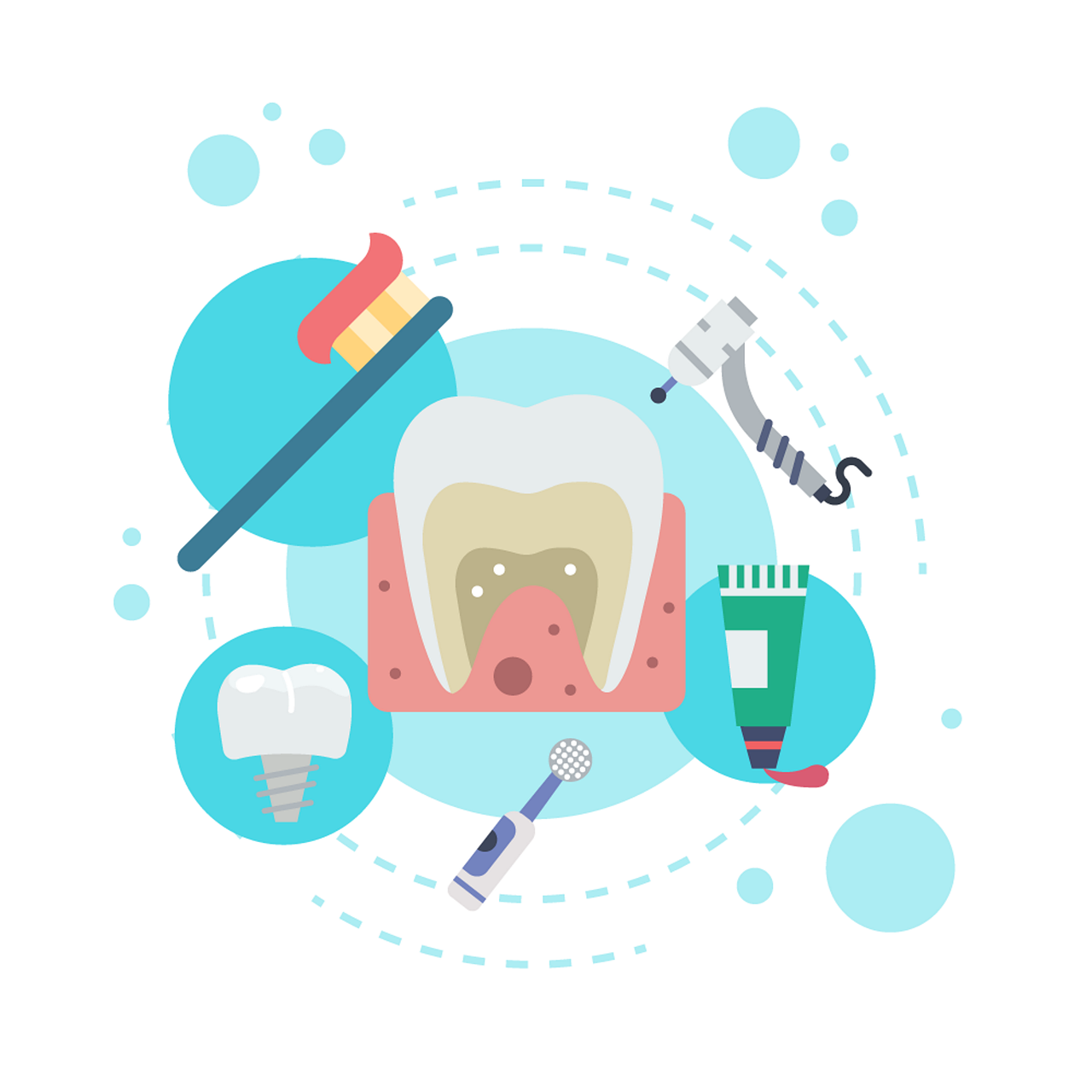 Tooth decay is a widespread problem that affects people all over the world. According to a report by the CDC, almost everyone has dealt with cavities, with more than 9 out of 10 adults being affected.
Tooth decay is a widespread problem that affects people all over the world. According to a report by the CDC, almost everyone has dealt with cavities, with more than 9 out of 10 adults being affected.
While our front teeth may seem less prone to decay due to their position and ease of cleaning, they can still be affected for various reasons.
In this article, we'll explore why our front teeth can develop cavities and why it's important to address them through cavity filling.
In this article:
1. How can front teeth get cavities?
2. How can cavities progress on front teeth?
3. Front tooth cavity filling with composite:
4. Other uses of composite for front teeth:
5. Alternatives to dental filling for front teeth:
6. When is front tooth decay treatable at home?
7. How long can composite filling last on front teeth?
How can front teeth get cavities?
You might think that tooth decay only affects the back teeth or molars, which have many pits and grooves that trap food and plaque. However, the front teeth, especially the four sets of upper incisors, can also get cavities. But why is this the case since their surfaces are smooth?To answer this question, we need to understand that tooth decay is a multifactorial disease, meaning it is the result of multiple causes rather than just one.
This is well explained with the "Keyes diagram", which shows three main factors that influence the development of dental caries: sugar, bacteria, and host (saliva and teeth).
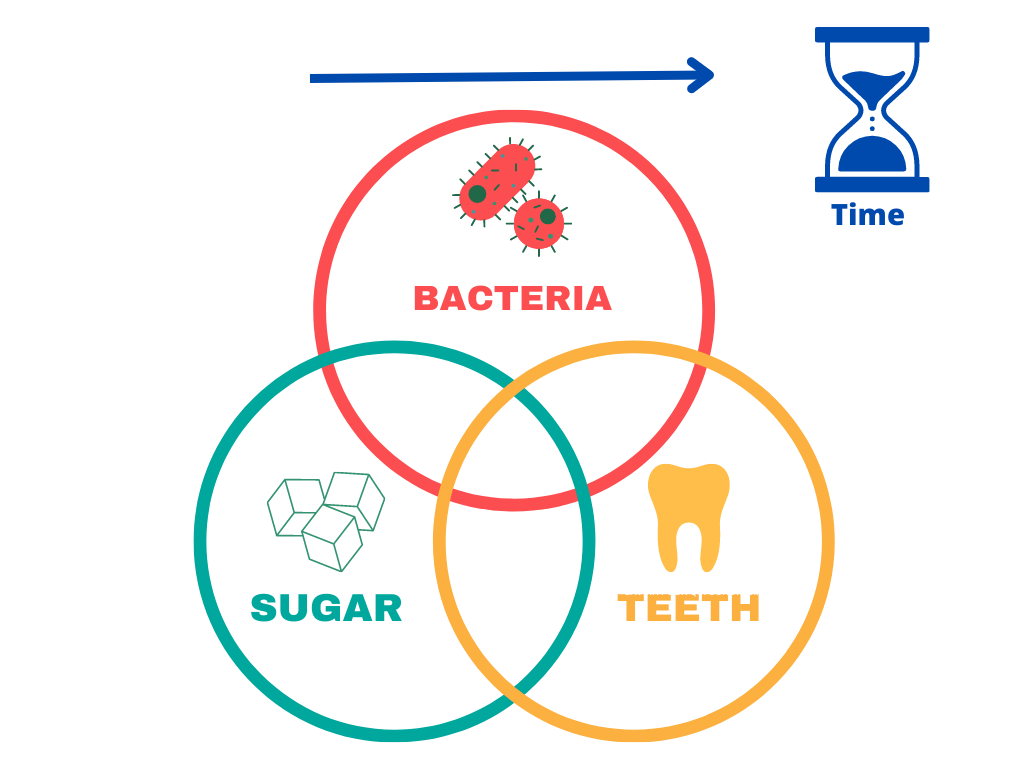
These factors interact with each other over time to cause tooth decay:
- Sugar: A high-sugar diet is a significant risk factor for dental caries.
- Bacteria: Bacteria turn the sugar in our diet into acid, which eats away at the tooth minerals.
- Teeth and saliva: The less saliva you have in your mouth, the higher the risk of cavities and gum disease. Also, the more fragile your teeth are, the less resistant they are to acid attacks.
When decay occurs on the front teeth, they most often affect the areas between the teeth and around the gum line. This is because these spaces naturally attract more plaque and bacteria (they are hard to reach by the toothbrush).
So, by analyzing the Keyes diagram, we can conclude that certain factors significantly increase the risk of dental caries on front teeth. For example:
- If you wear braces or have crowded or overlapped front teeth, this will make it harder to clean them and remove plaque.
- If you consume a lot of sugary foods and drinks, especially between meals, this will provide more fuel for the bacteria to produce acids that damage your enamel.
- If you have problems with saliva secretion due to a medical condition or medication, your mouth will be deprived of its cleaning and buffering action, thus increasing your risk.
- If you have poor oral hygiene or don't visit your dentist regularly, your teeth will be more vulnerable to decay.
How can cavities progress on front teeth?
Cavities can affect any tooth, but they are more noticeable on your front teeth because they are visible when you smile or talk. If left untreated, cavities can progress through different stages: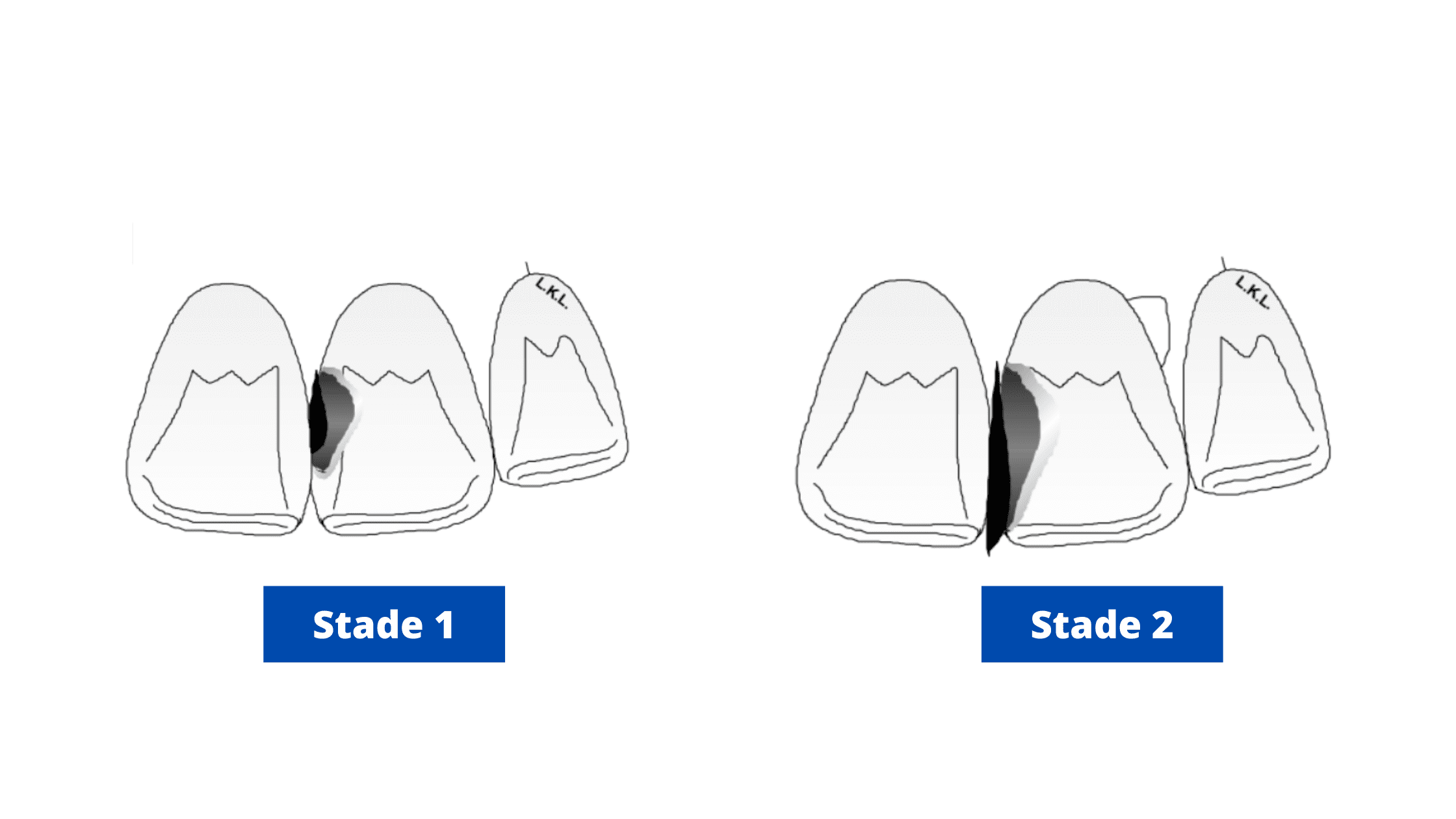
- The first stage is when the cavity is just a small spot on the surface of your tooth. It may look white or brown, but it does not hurt. This is because the cavity is only affecting the enamel, which is the hard outer layer of your tooth.
- The second stage is when the cavity gets deeper and reaches the dentin, which is the softer layer under the enamel. You may notice darker holes and feel some sensitivity to hot or cold foods and drinks. This is because the dentin transmits stimuli to the nerves that can sense temperature and pressure.
- The third stage is when the cavity reaches the pulp, the innermost part of your tooth that contains blood vessels and nerves. The cavity may cause severe pain and inflammation. This is because the pulp is very sensitive and can get infected by bacteria. This is also the stage that initiates complications such as dental abscesses.
Front tooth cavity filling with composite:
If you have a cavity in one of your front teeth, you may be concerned about how it will affect your smile.Unlike the molars, the front teeth are noticeable, so the primary focus of the restoration is almost always aesthetic. So by the time we finish filling your cavity, we want your teeth to fit seamlessly into your mouth, just like natural teeth do. That means we pay close attention to the shape, shade, and position.
One way to achieve this is with a composite filling. This is a white, tooth-colored material specially designed to restore the appearance of teeth. It allows them to blend in with the rest of the natural teeth.
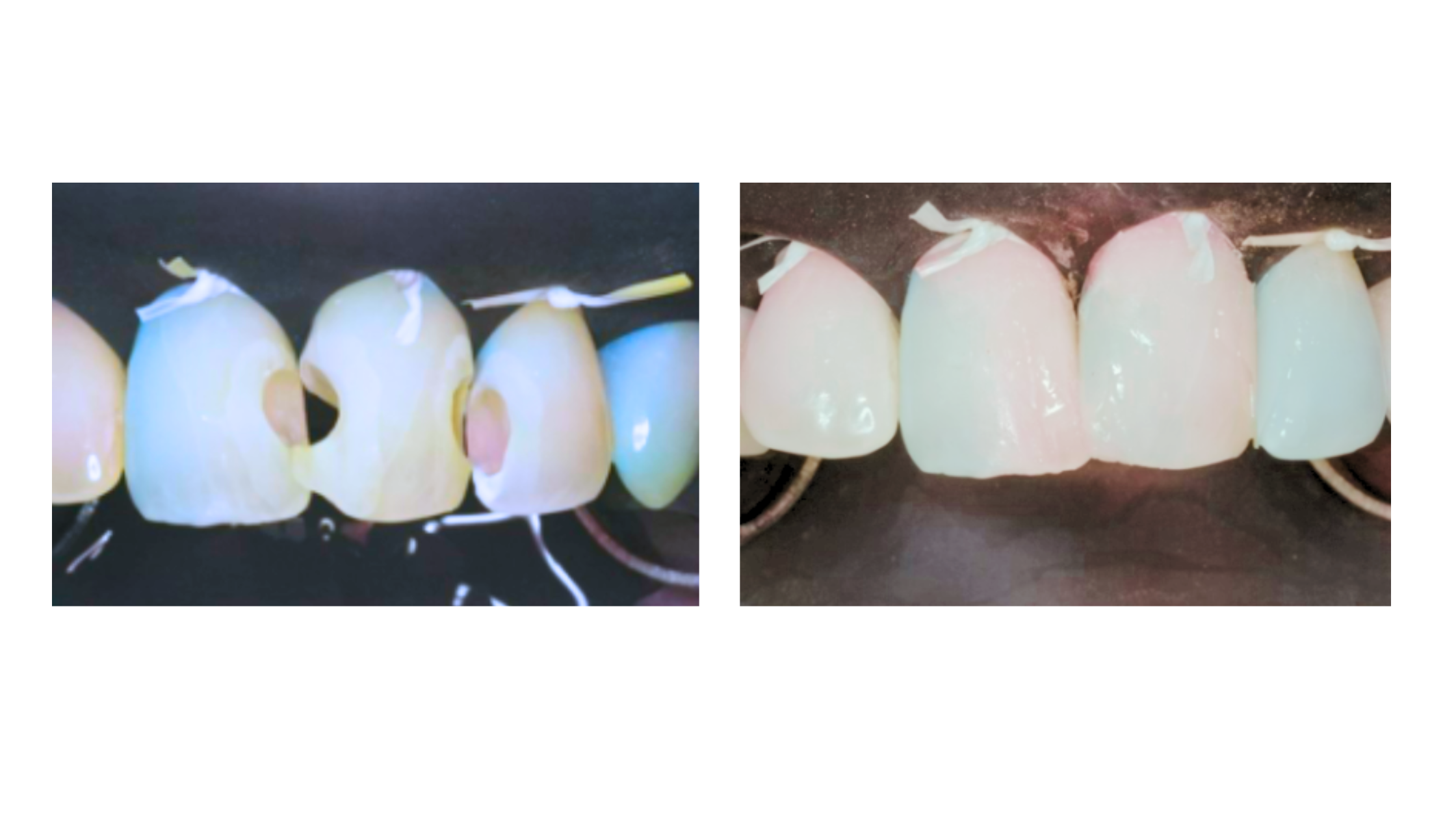
Composite filling on front teeth: Before & After
Here are the steps involved in the composite filling of the front teeth:
- The dentist will numb the area around the tooth with a local anesthetic.
- The dentist will remove the decayed part of the tooth with a drill and clean the cavity.
- The dentist will apply a gel to etch the surface of the tooth and make it rougher. This helps the composite material bond better with the tooth.
- The dentist will rinse and dry the tooth, then apply a bonding agent (a type of glue) to the tooth.
- The dentist will place the composite material in layers on the tooth, shaping it to match the natural contours of the tooth.
- The dentist will use a special light to harden (cure) each layer of composite material.
- The dentist will trim and polish the final restoration to make it smooth and shiny.
| Pros of Composite Fillings | Cons of Composite Fillings |
|---|---|
| - They look natural and can be matched to your tooth color. | - They are more expensive than amalgam (silver) fillings. |
| - They bond well with your tooth and restore its strength and function. | - They may wear out faster than amalgam fillings, especially if you grind your teeth or bite hard foods. |
| - They are less likely to cause sensitivity or allergic reactions than other materials. | - They may stain over time from coffee, tea, wine, or tobacco. |
There are also other filling materials, such as amalgam and glass ionomer cement (GIC).
Amalgam is silver in color, so it is not a cosmetic solution for front teeth. On the other hand, it is harder and more resistant, therefore, more suitable for back teeth.
GIC, like composite, has a color close to the teeth. But it is more fragile and wears out quickly. We often use it when the patient has poor oral hygiene or a high risk of cavities (due to its fluoride-release properties).
Other uses of composite for front teeth:
Aside from cavity filling, did you know that composite can also be used for other purposes on your front teeth? Here are some of the ways that composite can improve the appearance and function of your smile:- Repair fractured teeth: If you have a chip or crack on your front tooth, composite can be used to restore the shape and strength of your tooth.
- Repair worn-down teeth: If you have worn down your front teeth due to grinding, clenching, or acid erosion, composite can be used to rebuild the lost enamel and protect your teeth from further damage.
- Close gaps between teeth: If you have small spaces between your front teeth that bother you, composite can be used to fill them in and create a more uniform smile.
- Reshape front teeth: If you have front teeth that are crooked, misshapen, or uneven, composite can be used to change their shape and size.
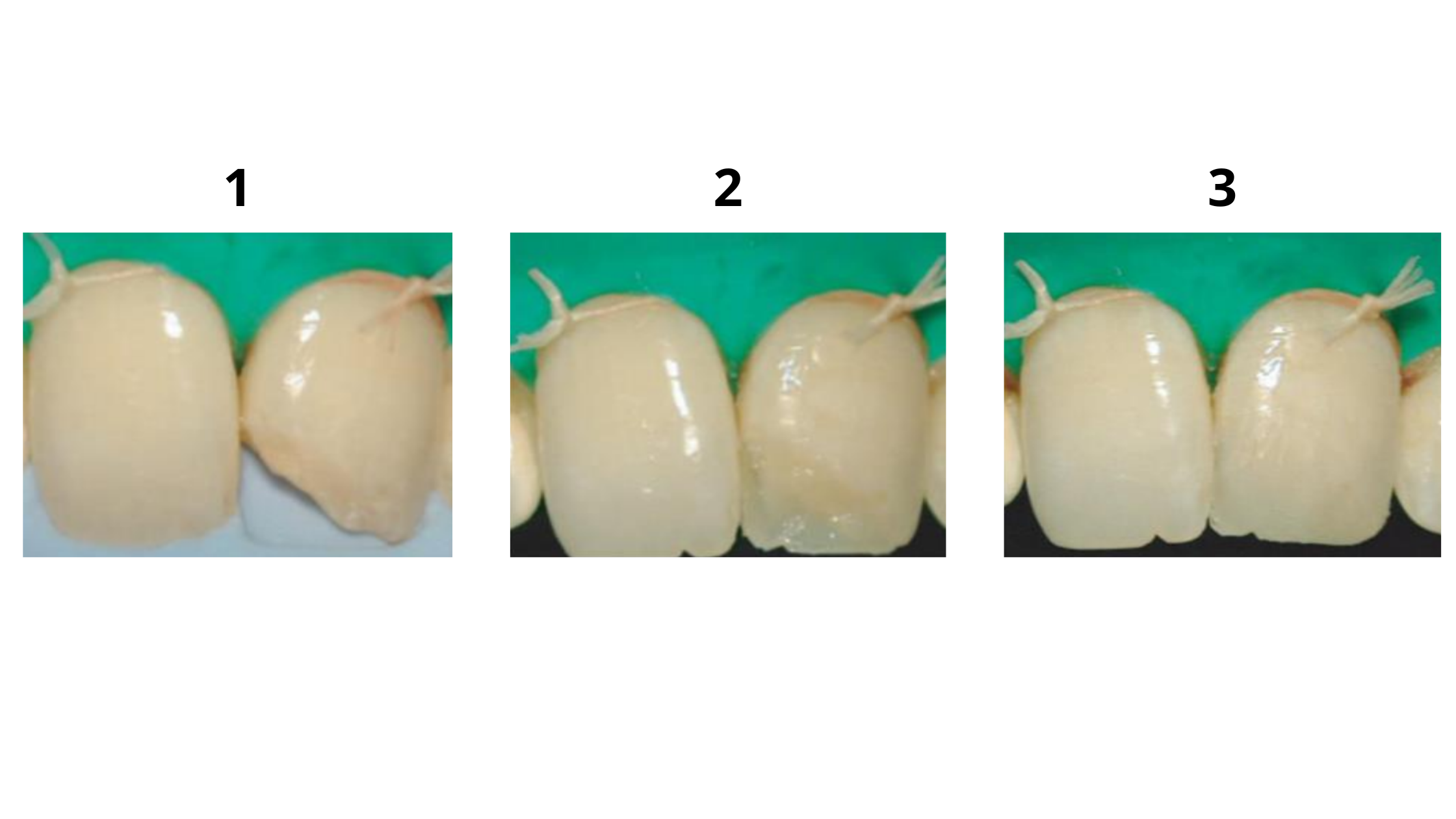
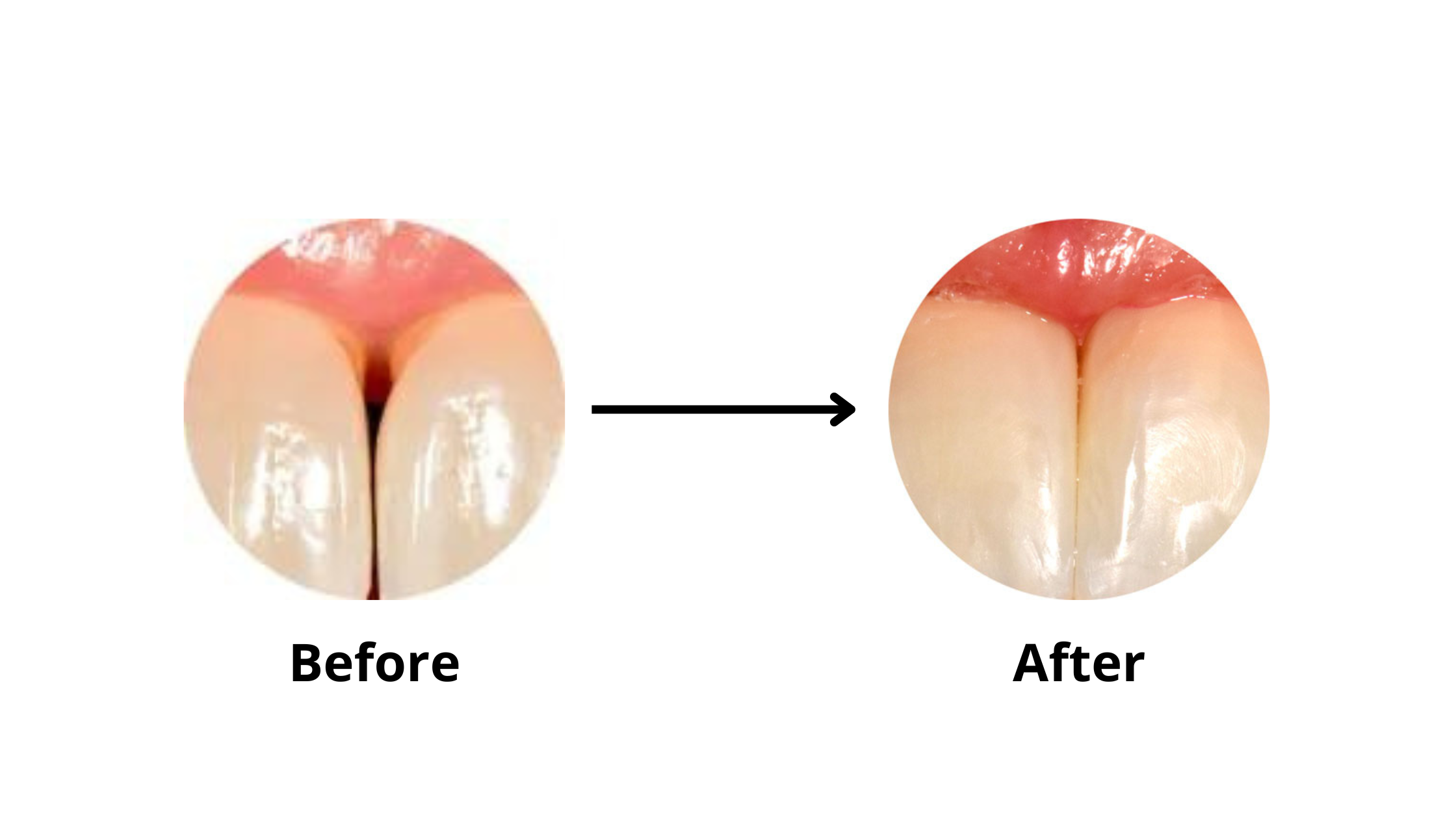
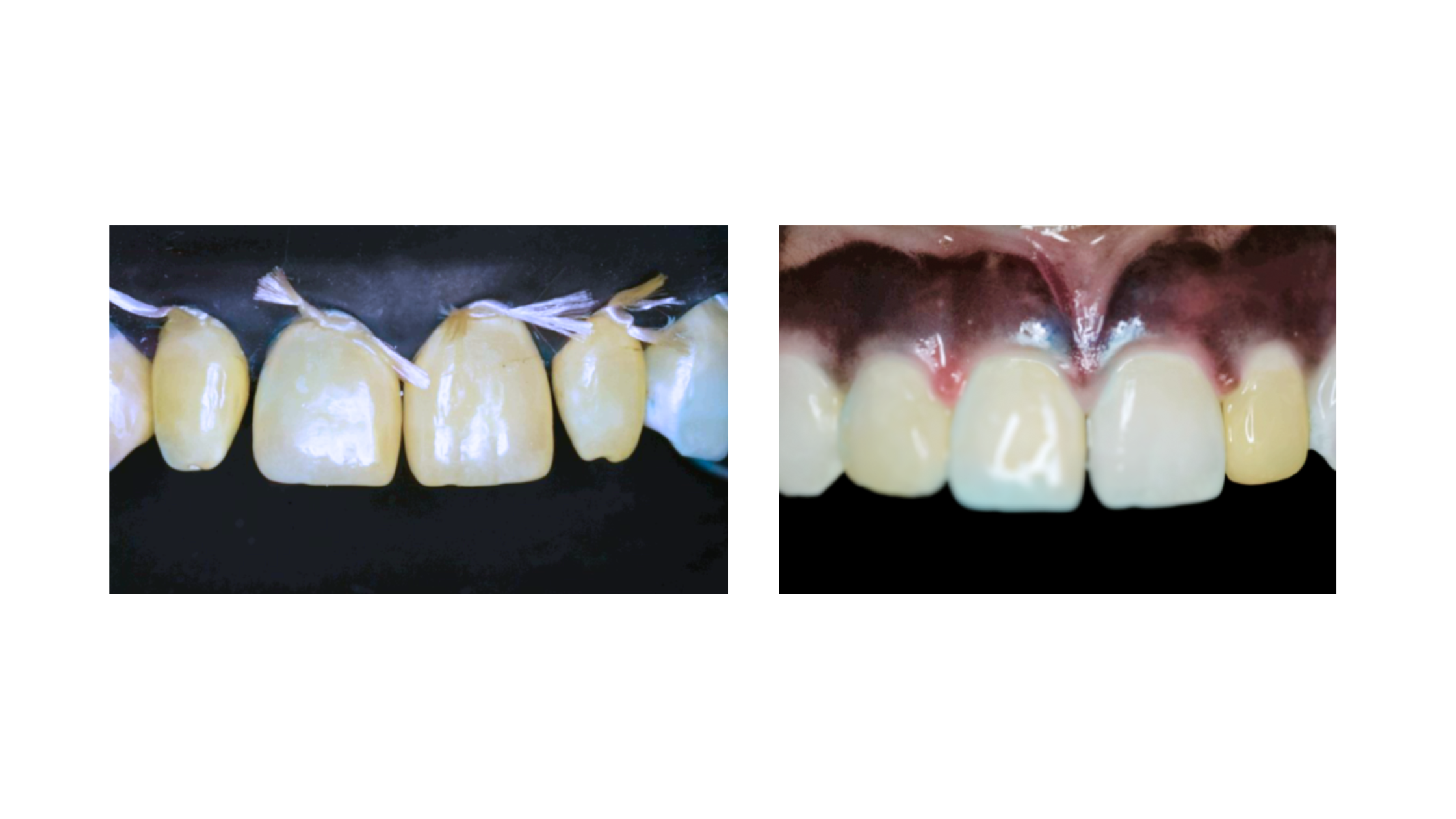
Composite bonding to fix the shape of triangular incisors
Alternatives to dental filling for front teeth:
Dental filling is a common and effective option for filling cavities on front teeth. But it may not be the best choice for everyone. Here are some alternatives to dental filling for front teeth that you may want to consider:- Icon Resin Infiltration: This is a minimally invasive technique that uses a resin material to fill and reinforce the enamel in one quick visit without drilling or anesthesia. It can be used only to treat early caries or "white spots" on the tooth surface.
- Veneers: These are thin shells of porcelain or composite resin that are bonded to the front of the tooth to improve its shape, size, color, and alignment. Veneers can cover a wide range of cosmetic issues, such as stains, chips, cracks, gaps, or crooked teeth.
- Crown: This is a cap that covers the entire visible part of the tooth to protect it from further damage and restore its appearance and function. A crown may be needed if the tooth is severely decayed, broken, or weakened by a large filling or root canal treatment.
When is front tooth decay treatable at home?
Not all tooth decay cases require a filling. In its early stage, tooth decay can be reversible. Treatment consists of applying remineralizing products such as fluoride and calcium-phosphorus-based products. The aim is to restore the minerals the tooth has lost. But this is only possible in early decay lesions (white spots).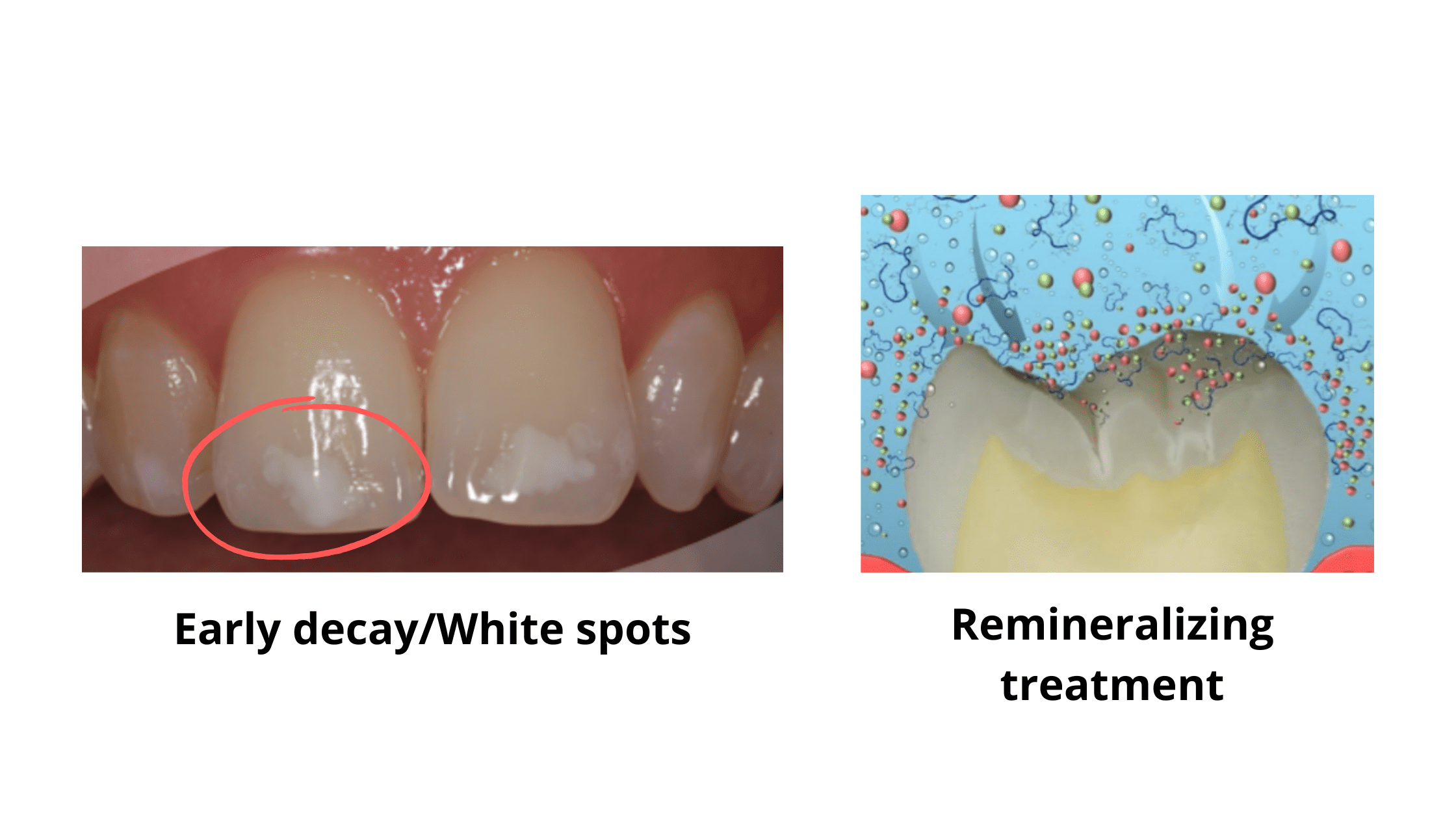
Also, it's important to adjust your diet and improve your oral hygiene to provide healthy conditions for the teeth to heal.
However, once decay has reached the dentin (darker holes in your teeth), the damage is irreversible and requires treatment by your dentist.
Depending on the extent of the decay, your dentist may recommend a filling, a crown, or a root canal treatment.
How long can composite filling last on front teeth?
One of the most common questions that patients ask is how long their filling can last on their front teeth. The answer is not simple, because it depends on many factors. These include the filling type, the cavity size and location, the quality of the bonding, and the oral hygiene habits.Composite fillings can last up to 10 years. But they require proper care and high maintenance to prevent them from wearing out or staining over time.
Some of the tips to keep your composite filling as long as possible:
- Avoid biting or chewing on hard foods or objects, such as ice, nuts, pens, or fingernails, that can crack or chip your filling.
- Avoid drinking or eating foods and beverages that can stain your filling, such as coffee, tea, wine, berries, or curry. If you do consume them, rinse your mouth with water afterward or brush your teeth gently.
- Brush your teeth twice a day with a soft-bristled toothbrush and fluoride toothpaste to remove plaque and bacteria that can damage your filling and your tooth enamel.
- Floss your teeth at least once a day to clean between your teeth and prevent plaque buildup and gum disease.
- Visit your dentist regularly for checkups and professional cleanings to monitor the condition of your filling and detect any signs of decay or damage early.
- Follow your dentist's instructions on how to care for your filling after the procedure. For example, you may need to avoid eating or drinking anything hot or cold for a few hours until the anesthetic wears off and the filling sets completely.
By following these simple steps, you can extend the lifespan of your composite filling and keep your front teeth healthy and beautiful. If you have any questions or concerns about your filling, feel free to leave them in the chat box below.
- Dental caries prevalence in individual tooth in primary and permanent dentition among 6-12-year-old school children in Shimla, Himachal Pradesh https://www.ijhas.in/article.asp?issn=2278-344X;year=2014;volume=3
- Dental Caries in Primary Teeth https://www.cdc.gov/oralhealth/publications/OHSR-2019-summary
